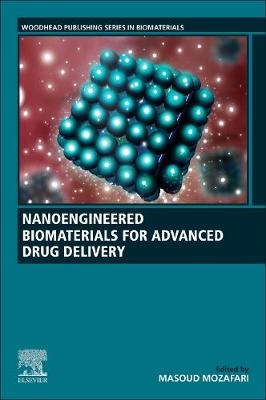
Nanoengineered Biomaterials for Advanced Drug Delivery
Elsevier / The Lancet (Verlag)
978-0-08-102985-5 (ISBN)
Nanoengineered biomaterials have enhanced properties that make them more effective than conventional biomaterials as both drug delivery agents, and in the creation of new drug delivery systems. As nanoengineering becomes more cost-effective, nanoengineered biomaterials have become more widely used within biomedicine.
Dr. Masoud Mozafari is a Fellow at Lunenfeld Tanenbaum Research Institute, Mount Sinai Health Hospital, University of Toronto. He was previously Assistant Professor and Director of the Bioengineering Lab, at the Nanotechnology and Advanced Materials Department, Materials and Energy Research Center, Cellular and Molecular Research Center, and Department of Tissue Engineering and Regenerative Medicine of the Iran University of Medical Sciences (IUMS), Tehran, Iran. Dr. Mozafari’s research interests range across biomaterials, nanotechnology, and tissue engineering, and he is known for the development of strategies for the treatment of damaged tissues and organs, and controlling biological substances for targeted delivery into the human body. Dr. Mozafari has received several awards, including the Khwarizmi Award and the Julia Polak European Doctorate Award for outstanding translational research contributions to the field of biomaterials. He has also received the WIPO Medal for Inventors from The World Intellectual Property Organization (WIPO), in recognition of his contributions to economic and technological development. Dr. Mozafari is currently working on the editorial board of several journals.
Part I: Principles of nanotechnology-based drug delivery 1. Principles of nanosized delivery systems 2. Controlled/localized release and nanotechnology 3. Stimuli-sensitive delivery systems 4. Sustainable delivery systems through green nanotechnology 5. Recent advances in multifunctional nanoengineered biomaterials 6. Mathematical and computational modelling of delivery systems 7. Nanoengineered biomaterials for delivery purposes: Past, present, and future
Part II: Nanoengineered Biomaterials for drug delivery 8. Synthetic and natural polymer-based nanoengineered biomaterials for drug delivery 9. Protein and peptide-based delivery systems 10. Lipid vesicles: Potentials as delivery systems 11. Block copolymers for nanoscale drug and gene delivery 12. Dendrimers for delivery purposes 13. Reversible cross-linked polymeric for delivery puposes 14. Polymeric micelles as delivery systems 15. Metallic nanoparticulate delivery systems 16. Gold nanoparticles in delivery applications 17. Silver nanoparticles for delivery purposes 18. Magnetically-based nanocarriers in drug delivery 19. Iron oxide nanoparticles for delivery purposes 20. Porous silica nanoparticles for delivery applications 21. Carbon-family materials for delivery applications
Part III: Delivery routes of Nanoengineered Biomaterials 22. Potential nanocarriers for the delivery of drugs to the brain 23. Nanotechnology for oral drug delivery and targeting 24. Nanotechnology for ocular and otic drug delivery and targeting 25. Nanoparticulate systems for dental drug delivery 26. Nanotechnology for pulmonary and nasal drug delivery 27. Nanotechnology for topical and transdermal drug delivery and targeting 28. Nanoemulsions for intravenous drug delivery 29. Nanoparticles for mucosal vaccine delivery 30. Nanotechnology for vaginal drug delivery and targeting 31. Nanotechnology for intracellular delivery and targeting
Part IV: Applications of Nanoengineered Biomaterials in Drug Delivery 32. Nanoengineered biomaterials for infectious diseases 33. Nanoengineered biomaterials for neurodegenerative disorders 34. Nanoengineered biomaterials for inflammatory diseases 35. Nanoengineered biomaterials for cancer diagnosis and treatment 36. Nanoengineered biomaterials for diabetes 37. Nanoengineered biomaterials for cardiovascular disease 38. Nanotechnology-based biosensors in drug delivery
| Erscheinungsdatum | 29.06.2020 |
|---|---|
| Reihe/Serie | Woodhead Publishing Series in Biomaterials |
| Verlagsort | London |
| Sprache | englisch |
| Maße | 152 x 229 mm |
| Gewicht | 1310 g |
| Themenwelt | Medizin / Pharmazie ► Physiotherapie / Ergotherapie ► Orthopädie |
| Technik ► Maschinenbau | |
| Technik ► Medizintechnik | |
| ISBN-10 | 0-08-102985-3 / 0081029853 |
| ISBN-13 | 978-0-08-102985-5 / 9780081029855 |
| Zustand | Neuware |
| Informationen gemäß Produktsicherheitsverordnung (GPSR) | |
| Haben Sie eine Frage zum Produkt? |
aus dem Bereich


